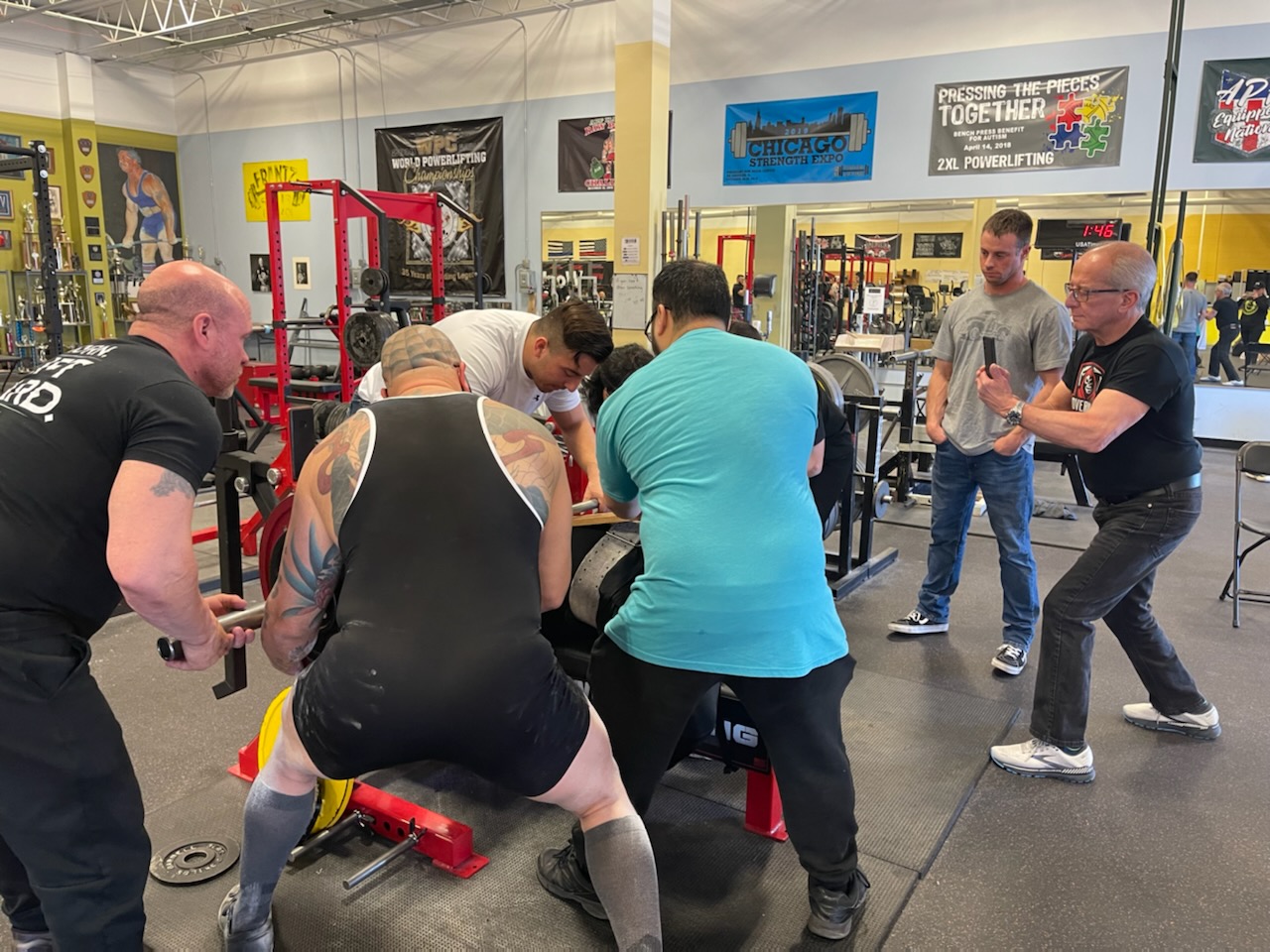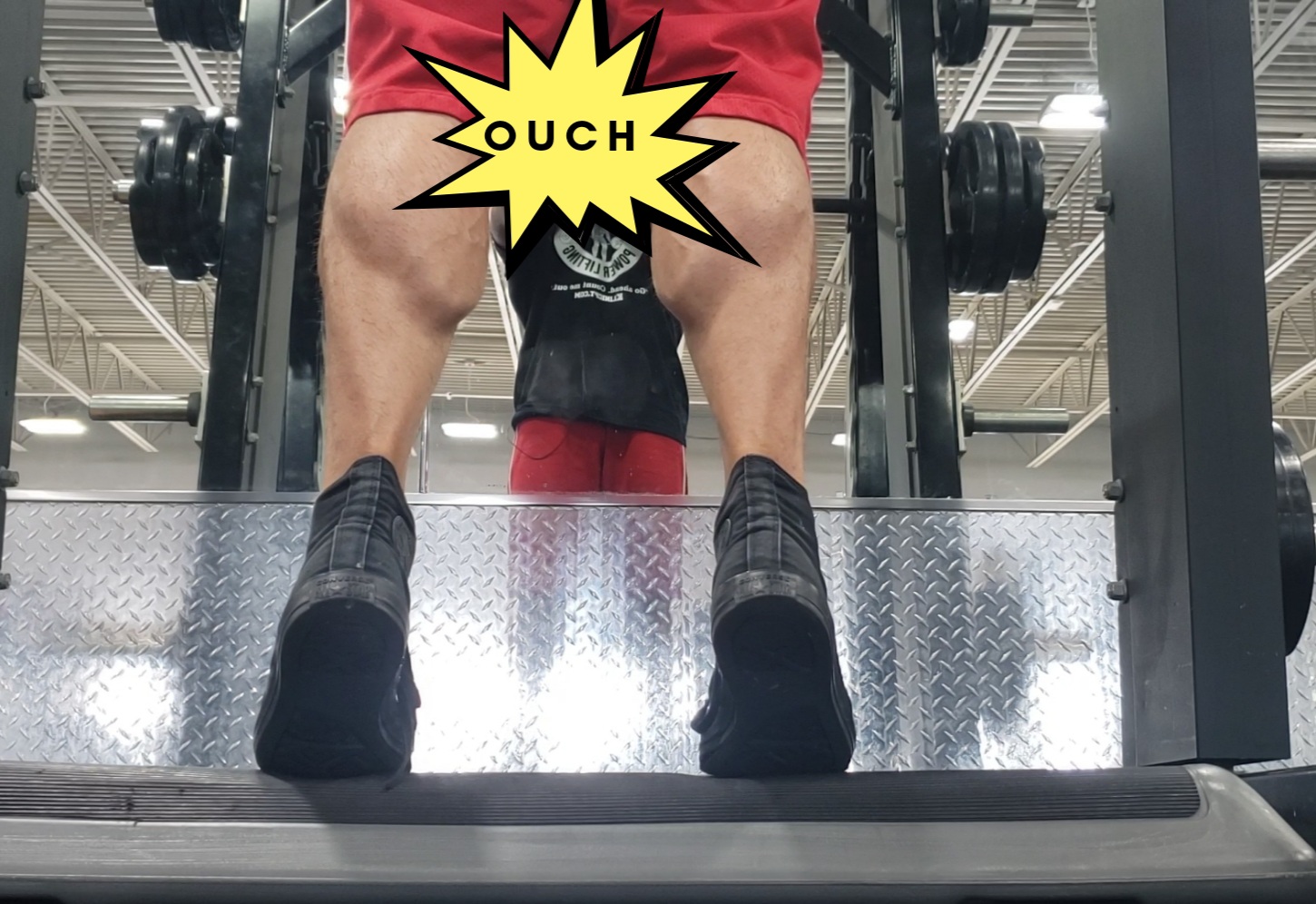Some powerlifters are built for a massive bench (short and stout arms, a mobile thoracic spine). A few of the elite can match their best training lifts on meet day. I was never gifted with natural strength (I had to work for the gains), but if I had to list a “talent” it would be the ability to stay at one weight class my entire career. Over the course of 17 years I have learned to get my diet dialed in, and a large part of that has been because of the L.E.A.P. program.
As powerlifters we eat for performance. That is not equivalent to eating for health. However, you can still eat a healthy diet while gaining strength in the process. That is where the L.E.A.P. (Lifestyle Eating and Performance) Report comes into play. In 2008 I met a dietician by happenstance at an event at Lou Malnati’s Pizza (deep dish – the best). I explained to her my exercise background, and that I also struggled with acne since I was 12. She offered her services. I used my $600 from the George W. Bush tax credit to purchase the L.E.A.P. Report. A local lab drew my blood, shipped it to a lab in Florida, and a physician analyzed the blood for sensitivities. The blood was broken down into 3 categories: non-reactive, moderately reactive and reactive. Then my dietician put me on a protocol to obtain my goals. I found not only remedies to assist clearing my skin, but also improve my body composition over the years.
Guide to Powerlifting Nutrition Poster

Non-reactive foods are processed well by the body. They provide fuel, healing properties and optimize function. Moderately reactive foods do not create an allergic reaction, but the body may be sensitive to the food. Reactive foods may cause an allergic reaction, IBS, bloating and weight gain. Typically these are foods one should avoid or eat in small consumption. The L.E.A.P. program also identified chemicals (like caffeine) and certain ingredients for beverages (like hops for beer).

I am not a dietician or nutritionist but the following are my experiences. One of the biggest shockers for me were oatmeal and rice. I ate these foods everyday, sometimes multiple times per day. They both tested in the highly reactive category. How many times have you heard a fitness ‘expert’ say, “You need to eat eggs and oatmeal for breakfast, chicken, brown rice and broccoli for lunch?” Corn is the best starch for my body for fuel. I often fry chicken and corn tortillas in corn oil. I substitute oatmeal for corn grits, bulgar or a multigrain hot cereal from Red Mill.

For a few years I avoided milk because I was told it created a “paste” in your colon which blocks the absorption of other nutrients. The reasoning seemed valid, but I began having shin splints in my forearms when I started out equipped benching (discussed in my Blogs). My L.E.A.P. report showed me I can process milk, so I added it back into my diet. My forearms started healing. If anyone has been near me on a heavy day, they will often see me carrying around chocolate milk. I am very lactose tolerant which helps. Chocolate milk contains all the essential electrolytes (potassium, sodium and calcium) along with protein and sugar. I recommend a low sugar one, like Fair Life. After weigh-ins and during meet day I will consume half a gallon of chocolate milk each day. Rich Froning from CrossFit also swore by chocolate milk.
A surprising find was caffeine was a very low reactive chemical, but I am moderately reactive to coffee. It makes sense I never got an energy boost from coffee, but taking 200 mg of caffeine anhydrous I am wired. I still enjoy my coffee to get my GI tract rolling in the morning. On the topic of fuel production, eating a 6 oz. steak and asparagus yields more energy for me versus a bowl of pasta, even though pasta has complex carbohydrates. I am not saying I do not eat pasta or pizza, far from it. The complex carbs pull water in my muscles when I am feeling flat or not recovered enough. Steak provides iron and creatine. Stan Efferding is a huge fan of steak. In college my sophomore year, I ate a grapefruit and a can of tuna early in the morning before my workouts. It digested quickly and I got just enough energy to propel me through a workout, more than a bowl of oats could accomplish.
When my diet is on track with my L.E.A.P. report, my body composition is leaner, my bodweight is under control and I do not lose any strength – all important factors for any powerlifter shooting to make a weight class. Plus my leverages like the deadlift are better for my body type. My ulcers do not speak to me, either. I use the L.E.A.P. as a general guideline for eating, the same way I use physician physical therapy protocols for my patients.

Multiple times random gym bros have told me I have looked like Jay Cutler, the bodybuilder (not the garbage QB from my home-town). It’s not just the big nose and similar hair line. It is definitely not the height, but Jay had immense discipline with his diet which reflected in his physique. Although he Is known for his physique, Jay was known to have incredible strength, too. He is also one of my idols for being the only guy to lose the title and win it back. I would not call myself a vain guy, but I want to at least look like I do lift the weights I say I do. To watch a video of the discipline it takes to eat to be the best, or just to get motivated, here is a link from Jay Cutler: https://youtu.be/QVBign_5JxM.
If rushing to spend hundreds of dollars to find what food you are sensitive to does not sound appealing, a book closely related to this topic is Eating Right 4 Your Type, by Dr. Peter J. D’Adamo. If you do not know your blood type then my advice – along with my dietician’s – is eat a variety of foods. Variety is the spice of life. Avoid eating processed foods and refined sugar. Eat an abundance of vegetables (peppers, broccoli, asparagus), low glycemic carbs (sweet potatoes, brown rice, corn bread) and high-quality proteins (steak, eggs, fish, chicken). Perhaps you admittingly lack the discipline to eat clean, or just prefer to lift heavy weights. There is nothing wrong with that! You may have a big total, but lack a competitive coefficient (snark laugh).
For more specific information about proper eating, sport performance or cutting weight for a competition reach out to me. I can set you up on a protocol. If you need further medical guidance, I can point you to a registered dietician who specializes in nutrition. Keep an eye out for future Blogs about meal prepping and making weight for a competition.





3 Responses